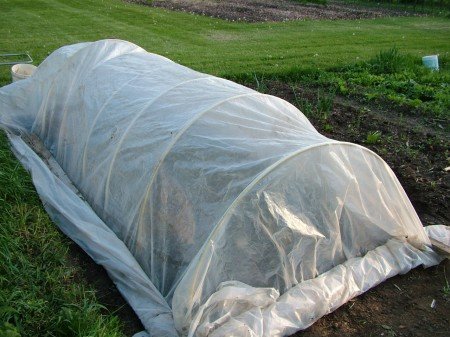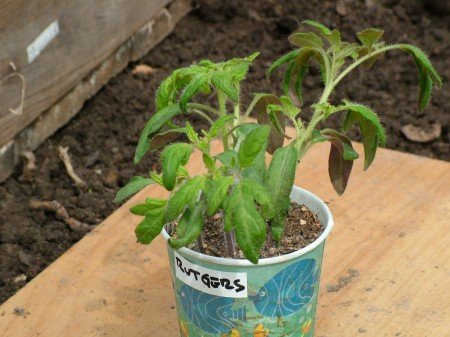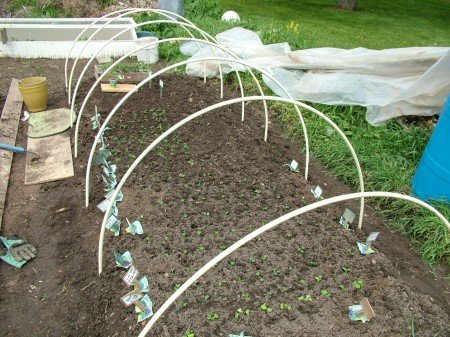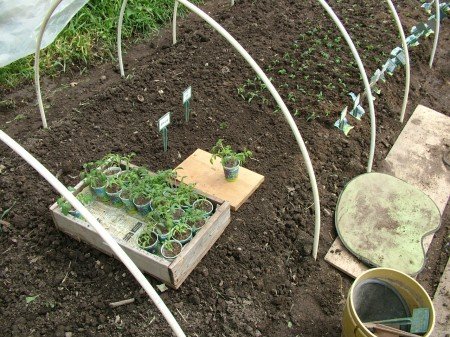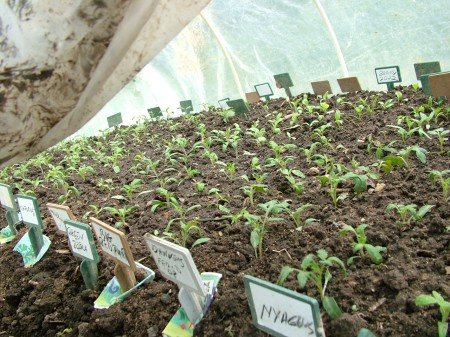There are normally three steps to growing vegetables that require indoor seeding. First you plant the seeds in a growing medium into a flat or a small container. Second, you transplant the sprouted seedlings after they have established themselves into a second, larger container. This is called potting off and it gives the seedlings room to expand both their root system and their leaf growth. Then, when the weather is right these transplanted and firmly established seedlings go to their final growing place in the garden.
Potting off has always been a particularly onerous chore for me. It is extremely time consuming. It requires setting up many times more flats and cups than are required to get the seeds started, and since I don’t have a greenhouse to work in, it makes a big mess of my sun-room where I have to handle all these transplanted starts.
If the seedlings are left in the little paper cups I start them in, they soon show the effects of over-crowding. They either get spindly or stop putting out robust new growth.
In many years, I’ve not kept ahead on potting off and many of my garden starts have been direct from the seed pot or flat into the garden. I just had to hope for the best with my underdeveloped plants and I’ve usually gotten away with it. It’s amazing how fast plants take off once they have room to grow. But there have been numerous occasions when the little seedlings just did not have enough energy to kick in and I’ve lost plants due to my lack of diligence.
Last year, when I was way behind on getting my tomatoes, peppers, and coles moved into larger temporary quarters, and I knew I was not going to have the time to do things right, I put up a small section of low tunnel hoop and moved most of the seedlings directly from their cups into the bed. The plants thrived and I was able to move them to their permanent place in the garden conveniently.
This year, I specifically planned to try this again. Yesterday, I put up a hoop tunnel and got over 300 plants into a temporary bed in the the ground, not in pots, in a single afternoon. I’m pretty sure I won’t be potting off to second containers again.
I had all the inputs for the hoop house and it only took me about a half hour to set it up. I took a little time to make sure the bed was weeded and smoothed out to receive the small starts. I posted earlier about how to build a low hoop tunnel here.
In the earlier post, I was using agricultural fabric to cover the hoop tunnel. For this tunnel, I purposely used polyethylene.
We are having thunderstorms off and on, right now, and I do not want my fragile seedlings to wash away or be inundated. I may re-cover the hoops with ag fabric later, but for now, the poly is a good protector. A disadvantage to the poly is that during the day, the plastic has to be removed or at least drawn back so the heat can escape. Leaving the structure closed would almost certainly cook the delicate seedlings.
I set the tunnel up over a smaller bed with about 11 feet of growing space. I could have used a larger bed, as I ran out of room by the time I was finished. But better planning would have also worked. I spaced the coles too far apart to start. In this “holding tank” setup, the plants really don’t need much room. They have way more space to spread out than in their little cups and they are only going to be here for three to four weeks, anyway.
I’ll probably have to do some re-arranging in a few days. I’ll wait until the plants are over their initial transplant shock. I need to space out the peppers, which I just moved in a clump from the seed pot to the ground, and I need to make some room for my celery and celeriac, which is still in cups.
We had thunderstorms last night. The plants were under their plastic cover and well protected. In this picture I took this morning, the plants are already happy and they will soon explode in their new home. I have over 300 plants in here, so you can imagine how much time I’ve saved versus sticking each one of these into its own pot.

